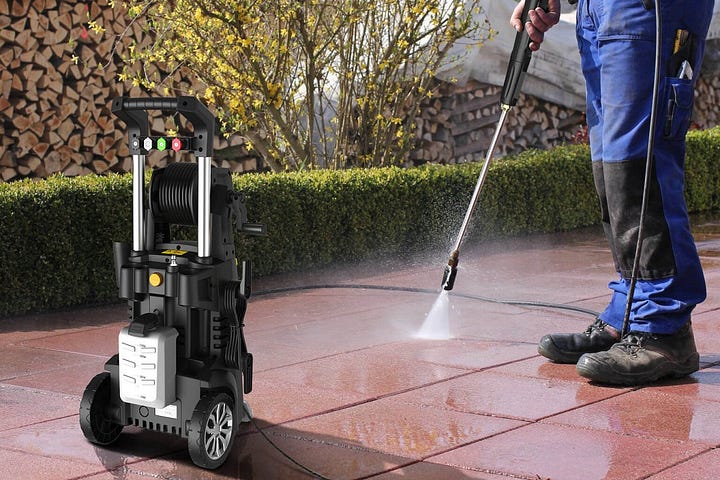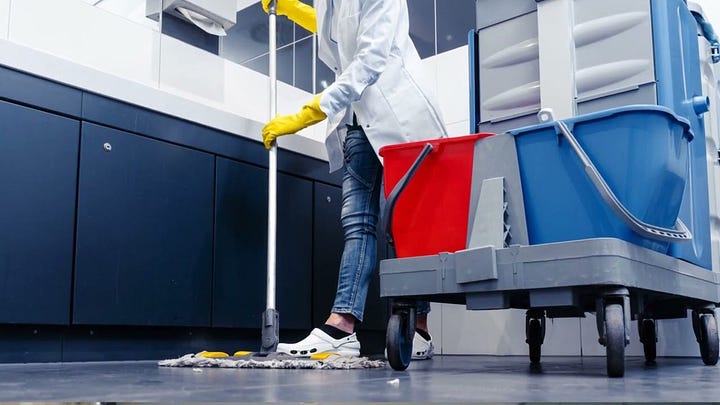
Marble counters are the epitome of elegance and luxury in modern kitchens and bathrooms. With their smooth surface, unique veining, and natural shine, marble counters can significantly elevate the aesthetics of any interior. However, unlike granite or quartz, marble is a softer, more porous stone, making it prone to scratches, stains, and dullness over time. To keep your marble counter gleaming and in pristine condition for years, proper cleaning and maintenance are essential.
In this comprehensive guide, we’ll walk you through everything you need to know about cleaning, sealing, and maintaining a marble counter for long-lasting shine. Whether you’ve just installed a new one or are looking to revive the brilliance of an older counter, this article will provide all the steps and expert tips you need.
Understanding Marble as a Natural Stone
Before diving into the cleaning process, it’s important to understand what makes marble unique. Marble is a metamorphic rock composed primarily of calcium carbonate. This mineral composition makes it highly sensitive to acids like lemon juice, vinegar, and wine, which can cause etching and dull spots.
Because of its porous nature, marble can easily absorb liquids and become stained. In high-traffic areas like kitchens or bathrooms, where spills are frequent, your marble counter needs extra care and preventive maintenance to retain its natural gloss and smoothness.
Daily Cleaning: Simple Yet Crucial
Maintaining the beauty of your marble counter starts with a consistent daily cleaning routine. Here’s how to do it the right way:
Use a Soft Cloth or Sponge
Avoid abrasive scrubbers or rough pads. Instead, use a soft microfiber cloth or sponge to wipe down your marble counter. This helps prevent scratches on the surface.
Use pH-Neutral Cleaners
Stay away from acidic or alkaline cleaners. Opt for a pH-neutral stone cleaner or simply use warm water mixed with a few drops of mild dish soap. Gently clean the surface, then rinse with water and dry thoroughly to prevent water spots.
Wipe Spills Immediately
If you spill coffee, wine, citrus juice, or anything acidic, clean it up immediately. These substances can etch the marble and leave permanent dull marks.
Weekly and Monthly Deep Cleaning
In addition to daily maintenance, you should perform deeper cleaning once a week or at least once a month:
Prepare a Cleaning Solution
Mix warm water with a few drops of mild, non-acidic dish soap. Avoid using lemon or vinegar-based cleaners, as these can damage the marble’s surface.
Gently Scrub
Dip a microfiber cloth in the solution and gently scrub the counter. Pay attention to corners and edges where grime can accumulate.
Rinse and Dry
After cleaning, rinse the surface with clean water and immediately dry it using a lint-free towel to prevent streaks or water stains.
Removing Stains from Marble Counter
Despite your best efforts, accidents can happen. Here are some common stains and how to treat them:
1. Organic Stains (Coffee, Tea, Wine, Fruit)
- Mix baking soda with hydrogen peroxide to form a paste.
- Apply the paste to the stained area.
- Cover it with plastic wrap and tape down the edges.
- Let it sit for 24–48 hours before wiping clean.
2. Oil-Based Stains (Grease, Cooking Oil)
- Use a mixture of baking soda and acetone.
- Apply as above, cover, and let it sit.
- These stains can be persistent, so repeat the process if necessary.
3. Ink or Paint Stains
- For light-colored marble, use hydrogen peroxide.
- For dark-colored marble, use acetone or lacquer thinner.
Important Tips
- Always test stain removal solutions on a small, hidden area first.
- Do not scrub vigorously. Always blot and gently wipe.
Sealing: The Key to Protection
Sealing your marble counter is one of the best ways to protect it from stains and etching. While sealing won’t make marble completely stain-proof, it provides a protective barrier that slows down the absorption of liquids.
When to Seal?
- Generally, marble counters should be sealed every 6 to 12 months.
- Perform a simple water test: pour a few drops of water on the surface. If the water is absorbed within a few minutes, it’s time to reseal.
How to Seal a Marble Counter
- Clean the Surface: Ensure your marble counter is clean and dry.
- Apply the Sealer: Use a soft cloth to apply a marble sealer (available at most hardware or home improvement stores).
- Let it Sit: Allow the sealer to penetrate for the time indicated by the manufacturer (usually 10–15 minutes).
- Buff Off Excess: Wipe off any residue using a dry microfiber cloth.
- Cure Time: Allow the surface to cure (usually 24 hours) before using the counter.
Polishing: Restoring the Shine
If your marble counter has become dull over time, polishing can help restore its original shine.
Use a Marble Polishing Powder
- Available at stone care stores or online.
- Apply the powder using a damp cloth and rub gently in circular motions.
- Rinse and dry the surface after polishing.
Professional Polishing
For heavily etched or scratched surfaces, it’s best to call a professional who can use specialized tools and techniques like diamond polishing pads for optimal results.
Preventive Measures for Longevity
Taking proactive steps can significantly extend the life and beauty of your marble counter:
Use Cutting Boards
Never cut fruits or vegetables directly on the marble surface. Always use a cutting board to avoid scratches and acid contact.
Use Coasters and Trivets
Place coasters under glasses and mugs, especially those containing acidic beverages. Use trivets or mats under hot pots and pans to avoid thermal shock and possible cracking.
Avoid Harsh Chemicals
Do not use bleach, ammonia, or any household cleaner that contains acids. These can damage the protective seal and dull the marble.
Dust Regularly
Dust may contain fine grit that can scratch the surface. A quick dusting every day or two with a microfiber cloth can help.
Common Myths About Marble Maintenance
Myth 1: Marble is too high maintenance.
While it requires care, maintaining a marble counter is not as daunting as it seems. With simple daily routines and occasional sealing, your marble can stay beautiful for decades.
Myth 2: Marble always stains easily.
Sealed marble is more resistant to stains. Quick response to spills and regular maintenance reduce the risk significantly.
Myth 3: All-purpose cleaners are safe for marble.
This is false. Most all-purpose cleaners contain acidic ingredients that can damage marble. Always use marble-specific or pH-neutral cleaners.
What to Do in Case of Damage
Even with the best care, chips, cracks, or dull spots may eventually appear. Here’s what you can do:
For Minor Chips
Use a marble repair kit that includes epoxy or resin fillers. These can be color-matched to your specific marble for a seamless finish.
For Major Cracks or Deep Etches
Call a professional stone restoration specialist. They can assess the damage and use advanced techniques to restore the marble counter.
Eco-Friendly Marble Care Options
If you prefer environmentally friendly cleaning options, here are a few safe alternatives:
- Castile Soap: A natural, gentle cleanser for light cleaning.
- Cornstarch: Can be used to absorb oil stains.
- Essential Oils: Add a few drops of lavender or tea tree oil to your soap mix for natural fragrance and antibacterial benefits.
Always test any homemade mixture on a small patch before applying it to the whole counter.
Final Thoughts
A marble counter is an investment in both beauty and function. With its elegant appearance and timeless appeal, it can become the focal point of any room. However, to enjoy its full value, you need to treat it with the care it deserves. From daily cleaning and spill management to regular sealing and periodic polishing, each step plays a vital role in maintaining that luxurious shine.
With consistent and gentle care, your marble counter can remain just as breathtaking as the day it was installed—continuing to impress guests and enhance your space for years to come.
Summary Checklist for Marble Counter Maintenance
- ✅ Clean daily with a soft cloth and pH-neutral cleaner
- ✅ Wipe spills immediately
- ✅ Deep clean weekly or monthly
- ✅ Seal every 6–12 months
- ✅ Use cutting boards, coasters, and trivets
- ✅ Avoid acidic or abrasive cleaners
- ✅ Polish occasionally or hire professionals
- ✅ Use eco-friendly alternatives for green cleaning
By following these simple yet effective tips, you ensure that your marble counter remains spotless, polished, and stunning for the long haul.







